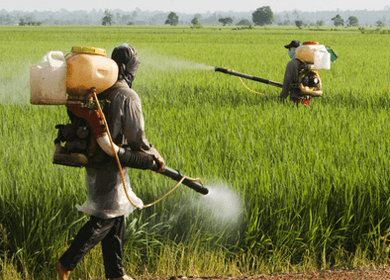
While a great deal of buzz arose with the recently vilified Stanford University study about the questionable benefits of organic foods for children, new research from University of California, Davis reveals the cumulative dangers for young children when it comes to food toxicities found in numerous common foods. Toxins are found at levels acceptable to the Food and Drug Administration in many commercially produced foods. However, the cumulative effects of these toxins has only recently come to the attention of many within the food industry.
 Young Children Especially Vulnerable
Young Children Especially Vulnerable
According to the study from UC Davis, which was published in the professional journal Environmental Health, researchers examined the effects of a wide range of food contaminates on very young children, age two to five years old. Researchers focused their attention on food with wide pesticide exposure, such as celery, green beans, pears, dairy, spinach, strawberries, grapes, broccoli, lettuce, apples, peaches and tomatoes. According to Rainbow Vogt, lead author of the study, “Currently, the U.S. Environmental Protection Agency only measures risk based on exposures of individual contaminates. The results of this study demonstrate a need to prevent exposure to multiple toxins in young children to lower their cancer risk.”
Young children are thought to be especially vulnerable to the cumulative effects of food toxins. This is because their bodies are still developing, particularly their central nervous system and brains. Additionally, children do not have fully developed immune systems or the ability to expel many toxins commonly found in the environment. Approximately 44 foods are known to have high concentrations of toxic compounds, including metals lead, arsenic and mercury; DDT and other persistent organic pollutants; pesticides such as chlorpyritfos, endosulfan and permethrin.
Researchers discovered all of the children in the study had levels of toxins that far exceeded the benchmark levels for dioxins, DDE (a derivative of DDT), arsenic and dielodrin. Additionally, they found that approximately 95 percent of the children in the study had noncancerous but high levels of acrylamide in their systems. Acrylamide is a chemical that is widely present in processed foods such as potato and tortilla chips.
Some Toxins Live On
Although DDT was banned in the United States in 1972, it is a pesticide that continues to live on in the soil in which it was used. DDT is classified as a persistent organic pollutant and is currently banned under the Stockholm Convention. However, this convention did not go into effect until 2004 and many countries have not ratified it. In fact, DDT use was not banned in the United Kingdom until 1984.
DDT is used to repel or kill mosquitos in an effort to fight malaria and other illness mosquitos spread. As a result, even with the ban through the Stockholm Convention, an exception is for mosquito control.
Even today, it continues to be manufactured in India and was only discontinued in China in 2007. While banning DDT use around the world has been widely accepted for many years, many countries have been slow in discontinuing use of the pesticide. Although DDT for agricultural use is banned, it continues to be used in North Korea, India and many other countries.
In many cases, the long term effects of pesticides have not been examined in depth when it comes to the effects on children. Additionally, the studies used by the FDA to determine the dangers of pesticides are often produced by the same companies that manufacture the pesticides. Since the FDA only considers the effects of single toxin exposure and not cumulative and multiple toxin exposure, it raises the question of the effectiveness of FDA regulation on pesticide use when it comes to the safety of food.
Do you have concerns about potential pesticide contamination for your family? What ways do you limit food toxins in your life? What do you think about how the FDA regulates food pesticides?
– The Alternative Daily

